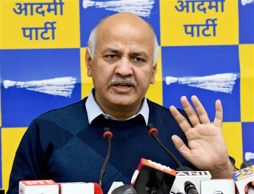
Less than 2 per cent of enrolled students in India pursue a doctoral degree, leading to serious crisis of faculty in the universities.
A.K. Sarkar and S.K. Choudhary
The quality of higher education in India is being discussed and debated at various levels. To take the debate further we need to start with the nature of higher education institutions. The nature of degree-awarding institutions in India is complicated primarily due to affiliation and funding sources. They may be categorised into Central Universities (fully funded by the central government), state universities (funded by state governments and occasionally assisted by the central government), Private state universities (funded by private individuals or trusts), Deemed universities (government or privately funded), and institutions of national importance (funded by the central government).
With more than 700 universities and 36,000 affiliated colleges enrolling nearly 30 million students which makes about 22 per cent Gross Enrolment Ratio (GER) in higher education in India, the scene is quite complex. With all these institutions, nearly 86 per cent of students are enrolled in bachelor's degree programmes with about 74 per cent enrolling in three-year B.A., B.Com. or B.Sc. degrees. One-sixth of all Indian students are enrolled in engineering/technology degrees. Education, medicine, agriculture, veterinary science and law all together accounts for less than 10 per cent of total enrolment. About 12 per cent students pursue post graduate studies whereas only 2 per cent are enrolled in doctoral degree and other diploma programmes. These numbers would see a change when the country meets the target of 30 per cent Gross Enrolment Ratio (GER) in higher education by 2030.
The above statistical details on the number of universities and colleges present quite a satisfactory picture of higher education in India. However, when one looks at the quality, the scenario is quite disappointing. Even the highly rated IITs and IIMs do not figure in the top 200 universities in the world by any of the ranking agencies. There are many reasons for such dismal performance even after 70 years of independence. One of the important reasons may be attributed to low Pupil-Teacher Ratio (PTR) and quality of faculty. The present Pupil Teacher Ratio (PTR) in higher education (universities and colleges) is around 1:23 whereas the recommended values as per University Grants Commission guidelines is 1:12 for postgraduate students and 1:15 for undergraduates.
Multiple agencies to control
In India, the Ministry of Human Resource Development (MHRD) is responsible for supervising the functioning of all the universities through its chief regulatory body —Universities Grants Commission (UGC). The other government organisations which are responsible for the regulation of technical education are All-India Council for Technical Education (AICTE). There are two quality assessment bodies, namely National Assessment and Accreditation Council (NAAC) and National Board of Accreditation (NBC). AICTE and UGC are responsible for providing guidelines for recruitment of faculty that specifies the minimum qualifications and experiences required at different levels. Recruitments of faculty are being made by the university authorities or the state governments.
Today most of the educational institutions in the country are facing a serious faculty crunch. Many graduate and post graduate departments in colleges and universities are functioning with less than 50 per cent of the total sanctioned faculty strength. Even institutions of international repute like IITs are working with more than 30 per cent faculty positions lying vacant in most of the departments. One estimate projects more than 3,00,000 vacancies of college and university teachers in the country. A task force on faculty shortage set up by the Ministry of Education has estimated the current faculty shortage in the country at 54 per cent. A further 1,00,000 teachers will be required each year in colleges in the coming decade if the shortage is not addressed as the country’s higher education system expands. The recruiters cite lack of competent candidates as the main reason for such a large scale vacancy of faculty members in the country. However, one needs to look at this problem more objectively.
Piecemeal solutions
In recent years the governments have tried to address the problem of faculty crunch by increasing the retirement age of college and university teachers from 60 to 65. IITs and Central Universities have even made the provisions of extending the services of their faculty members up to 70 years. But is this enough to solve this problem? Unless colleges and universities have sufficient qualified and competent teachers on their regular rolls and PTR is sufficiently and suitably brought down it is hard to think that quality of higher education in India would match with the good institutions of the world.
The University Grants Commission through the Central Board of Secondary Education (CBSE) conducts National Eligibility Test (NET) for prospective college and university teachers every year. On the similar line various state governments also conduct their State-Level Eligibility Test (SLET). However, when it comes to recruitment, colleges and universities have never been regular in recruiting teachers for their departments. Many universities take years to recruit teachers and in the process the students are the worst sufferers. Some of the reasons for the delay in recruitment of teachers are: the political interference in Vice Chancellor and other university higher officials’ appointments and even for faculty recruitments (leading to judicial intervention), the clash between the Chancellor and respective state governments and bureaucratic hassles created through college and university service commission. Also, the poor financial condition of the institutions is another factor.
Moreover, the question of not getting sufficient qualified and competent people for faculty positions also needs a serious scrutiny. Even though central and state agencies through their NET and SLET certify candidates' qualification for the job, colleges and universities look for candidates with Ph.D. degrees. This might be to help the candidates in future as they might face difficulties to get promotion for going to the higher level without a Ph.D. degree. When NET and SLET qualified candidates are not recruited directly for teaching positions, many of those who can't afford pursuing their Ph. D. degrees or wait for years to get recruited, go for other lower-level jobs.
Burden of mixed population
In addition, there are a few social reasons for not being able to attract students towards teaching and research. It is quite natural that anyone would like to financially settle down at an early age to look after their own as well as their family's well-being. Since a country like India has very large population, where the literacy rate is improving, mortality rate is coming down, life expectancy is increasing but economic growth is not consistently high and job opportunities are limited, everyone wants a job first. They cannot wait for an unknown period to get absorbed in higher education teaching profession when they are not very sure when the recruitment would actually take place. Once they get a job, either they remain satisfied with the job or work only to get a career growth.
Moreover, in Indian society, people at large long for early recognition. They try hard to get a reasonable job at an early age to be socially recognised. A person continuing in studies/research is usually not recognised at par with the person of the same age group who gets into a job and is drawing a handsome salary. It is also natural that the parents from poor economic backgrounds would like their wards to complete their education and start earning at the earliest. The parents from the middle and higher income groups want their wards to join a job with a high starting salary and for that they would send them for acquiring some degree in management or computer applications if required. Thus, there is hardly any encouragement even from socio-economically well-off educated families for their children to start a career in teaching and/or pursue research.
Lack of clarity in guidelines
It is high time that governments prepare clear guidelines for the recruitment of college and university teachers and ensure that regular recruitments take place, at least for the government-sponsored institutions. For private institutions, their recognition must be linked with their PTR matching with the national expectations. It has been noticed that various institutions have gone for contractual appointments but these contractual appointments in private as well as government institutions may prove to be a temporary solution, for long-term interest of the organisation a tenure appointment would always be the necessity and for that a clear and mandated policy is required. Any violation of the policy and guidelines must invite serious consequences for the organisation. It is also required that faculty recruitments for all disciplines are paid equal attention to ensure a balanced growth of the country.
The government also should take measures to attract bright young postgraduates by offering handsome scholarships to the Ph.D. scholars. However, while increasing opportunities for doctoral research in terms of number, care must be taken to ensure that quality is in no way compromised. This is going to be a real challenge.
While it is generally not that difficult to get well qualified candidates with Ph.Ds. in sciences and humanities, the real challenge is to recruit faculty in engineering disciplines as the number of suitable applicants is abnormally low. The major reason is that with professional degrees it is relatively easy to get a decent job for the students graduating from well-recognised institutions. The initial salary is so high compared to the scholarships offered for doing Masters or doctoral programmes that even the motivated students cannot resist the temptation of taking up a job. The family and social pressure also plays a major role in such decisions.
One of the solutions, especially for Engineering institutions, could be to recruit bright young graduates and postgraduates as Teaching Assistants and Lecturers, respectively, with a good initial package and other benefits. While working, they would work for their degrees and also do some undergraduate teaching. This will reduce the load on the existing faculty members and they would be able to concentrate on their research as more time will be available with them. Thus it offers a win-win situation for the institute and the country. The institute will be able to partially handle its scarcity of faculty and ultimately help in creating a pool of qualified and competent teachers.
Furthermore, it is also needed that the course curriculum at undergraduate and postgraduate levels be revised. Provisions should be made for interested students to take up research-oriented courses so that they get motivated and are encouraged to enrol for Ph.D. programmes. Such courses may even be introduced at the school level.
Finally, the existing teaching community has also got a major role to play in addressing the problem. They need to work for improving the image of this profession so that it gets its old glory back. The new generation of smart students must see the hard work and genuine efforts put in by their teachers in preparing them for the future. Teachers should not limit themselves as content providers rather they should present themselves as role models for the young generation. This would attract the new generation of students towards teaching.
A.K. Sarkar is Senior Professor, Dept of Civil Engineering and Director, BITS Pilani Capmpus and S.K. Choudhary is Associate Professor, Dept of Humanities and Social Sciences, BITS Pilani.



























